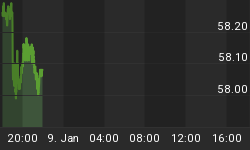As always, there was plenty of talk after Federal Reserve Chairman Janet Yellen held a press conference yesterday, June 18, 2014. Complaints are heard she said nothing of substance, which is true. To what the Fed might do, Yellen answered, "It depends."
In fact, there is no question what Janet Yellen will do. The Yellen Fed will inflate until the markets tell the Fed what to do. The-then Vice Chair recited all one needs to know on March 4, 2013, in "Challenges Confronting Monetary Policy."
In miniature:
"I'll begin with the Committee's forward guidance for the federal funds rate. The FOMC has employed such forward guidance since 2003 but has relied more heavily on it since December 2008, when the target for the federal funds rate was reduced to its effective lower bound. In current circumstances, forward guidance can lower private-sector expectations regarding the future path of short-term rates, thereby reducing longer-term interest rates on a wide range of debt instruments and also raising asset prices, leading to more accommodative financial conditions. In addition, given the FOMC's stated intention to sell assets only after the federal funds rate target is increased, any outward shift in the expected date of liftoff for the federal funds rate suggests that the Federal Reserve will be holding a large stock of assets on its balance sheet longer, which should work to further increase accommodation.
"Starting in March 2009, the FOMC's postmeeting statements noted that 'economic conditions are likely to warrant exceptionally low levels of the federal funds rate for an extended period,' and in November of the same year added 'low rates of resource utilization, subdued inflation trends, and stable inflation expectations' as justification for this stance." In August 2011, the Committee substituted 'at least through mid-2013' for the words "for an extended period." This date was moved further into the future several times, most recently last September, when it was shifted to mid-2015. Also in September, the Committee changed the language related to that commitment, dropping the reference to 'low rates of resource utilization and a subdued outlook for inflation.' Instead, it emphasized that 'a highly accommodative stance of monetary policy will remain appropriate for a considerable time after the economic recovery strengthens,' clarifying the Committee's intention to continue to provide support well into the recovery.
"Finally, last December, the Committee recast its forward guidance for the federal funds rate by specifying a set of quantitative economic conditions that would warrant holding the federal funds rate at the effective lower bound. Specifically, the Committee anticipates that exceptionally low levels for the federal funds rate will be appropriate 'at least as long as the unemployment rate remains above 6-1/2 percent, inflation between one and two years ahead is projected to be no more than a half percentage point above the Committee's 2 percent longer-run goal, and longer-term inflation expectations continue to be well anchored.'"
"....[T]he Committee could decide to defer action even after the unemployment rate has declined below 6-1/2 percent if inflation is running and expected to continue at a rate significantly below the Committee's 2 percent objective. Alternatively, the Committee might judge that the unemployment rate significantly understates the actual degree of labor market slack.
"....A considerable body of research suggests that, in normal times, the evolution of the federal funds rate target can be reasonably well described by some variant of the widely known Taylor rule. Rules of this type have been shown to work quite well as guidelines for policy under normal conditions, and they are familiar to market participants, helping them judge how short-term rates are likely to respond to changing economic conditions.
"The current situation, however, is abnormal in two important and related ways. First, in the aftermath of the financial crisis, there has been an unusually large and persistent shortfall in aggregate demand. Second, use of the federal funds rate has been constrained by the effective lower bound so that monetary policy has been unable to provide as much accommodation as conventional policy rules suggest would be appropriate, given the weakness in aggregate demand. I've previously argued that, in such circumstances, optimal policy prescriptions for the federal funds rate's path diverge notably from those of standard rules. For example, David Reifschneider and John Williams have shown that when policy is constrained by the effective lower bound, policymakers can achieve superior economic outcomes by committing to keep the federal funds rate lower for longer than would be called for by the interest rate rules that serve as reasonably reliable guides for monetary policy in more normal times. Committing to keep the federal funds rate lower for longer helps bring down longer-term interest rates immediately and thereby helps compensate for the inability of policymakers to lower short-term rates as much as simple rules would call for.
"I view the Committee's current rate guidance as embodying exactly such a "lower for longer" commitment...."
Federal Reserve Chairman Janet Yellen will inflate to infinity since her mind is incapable of grappling with an alternative.
Frederick Sheehan writes a blog at www.aucontrarian.com
















